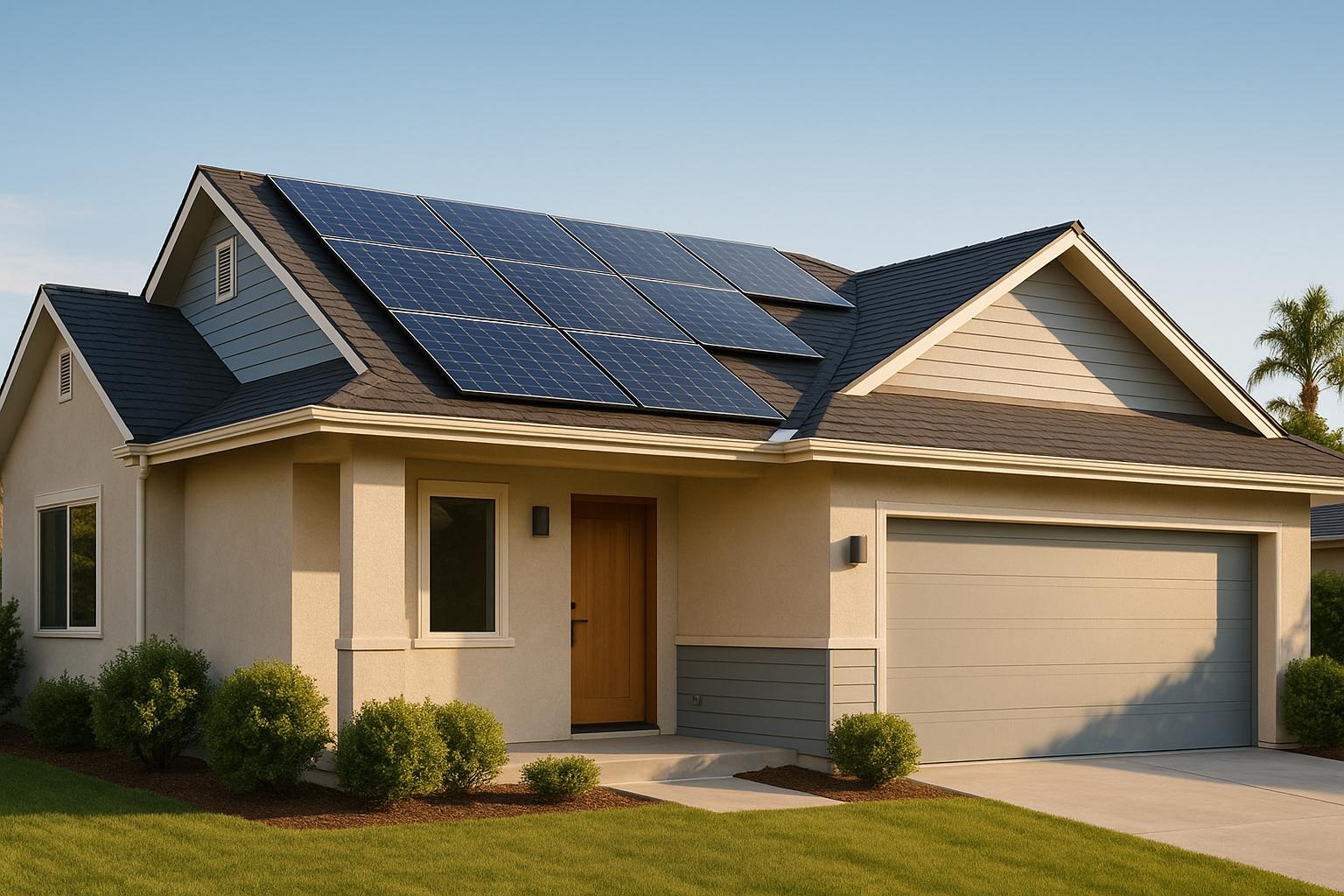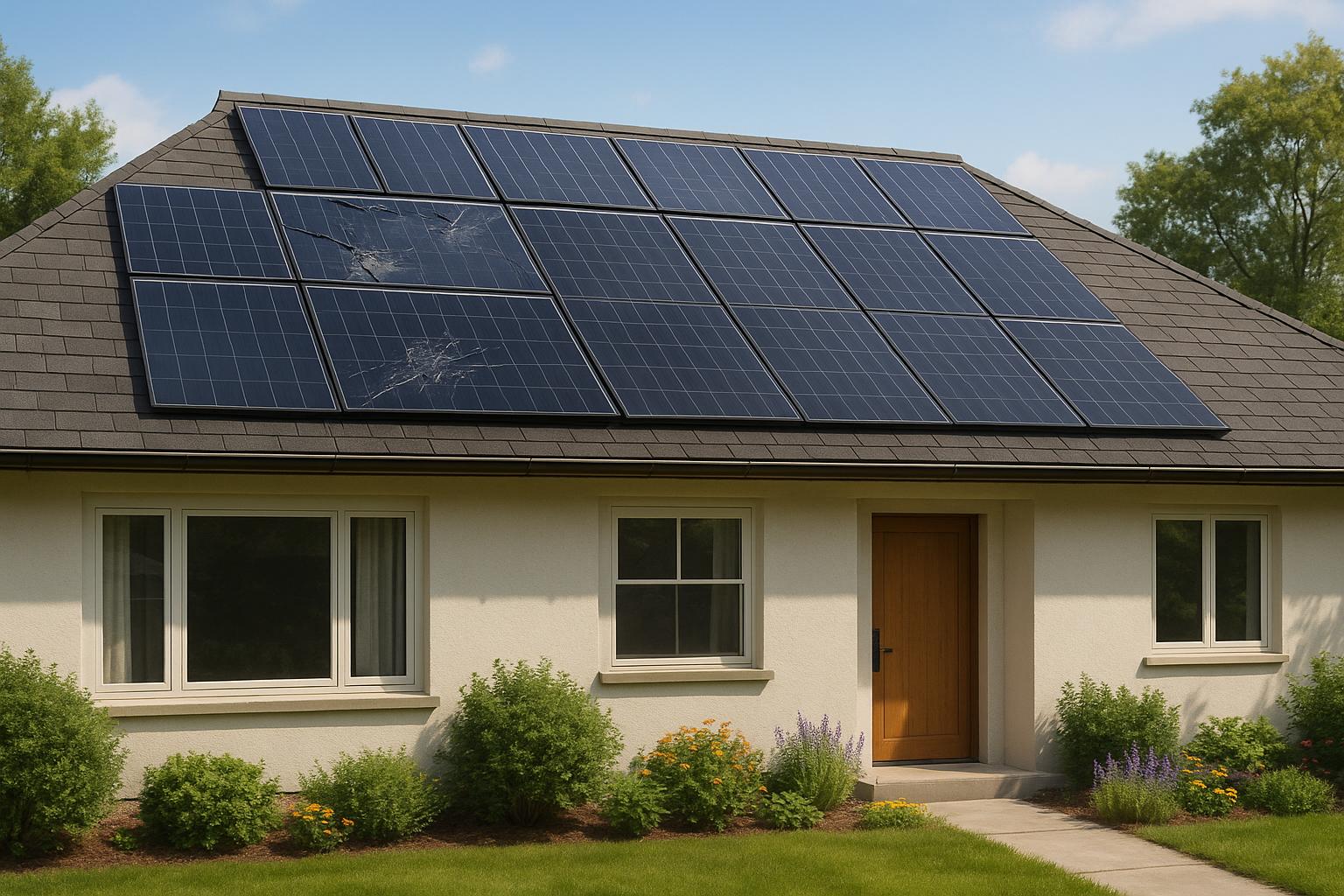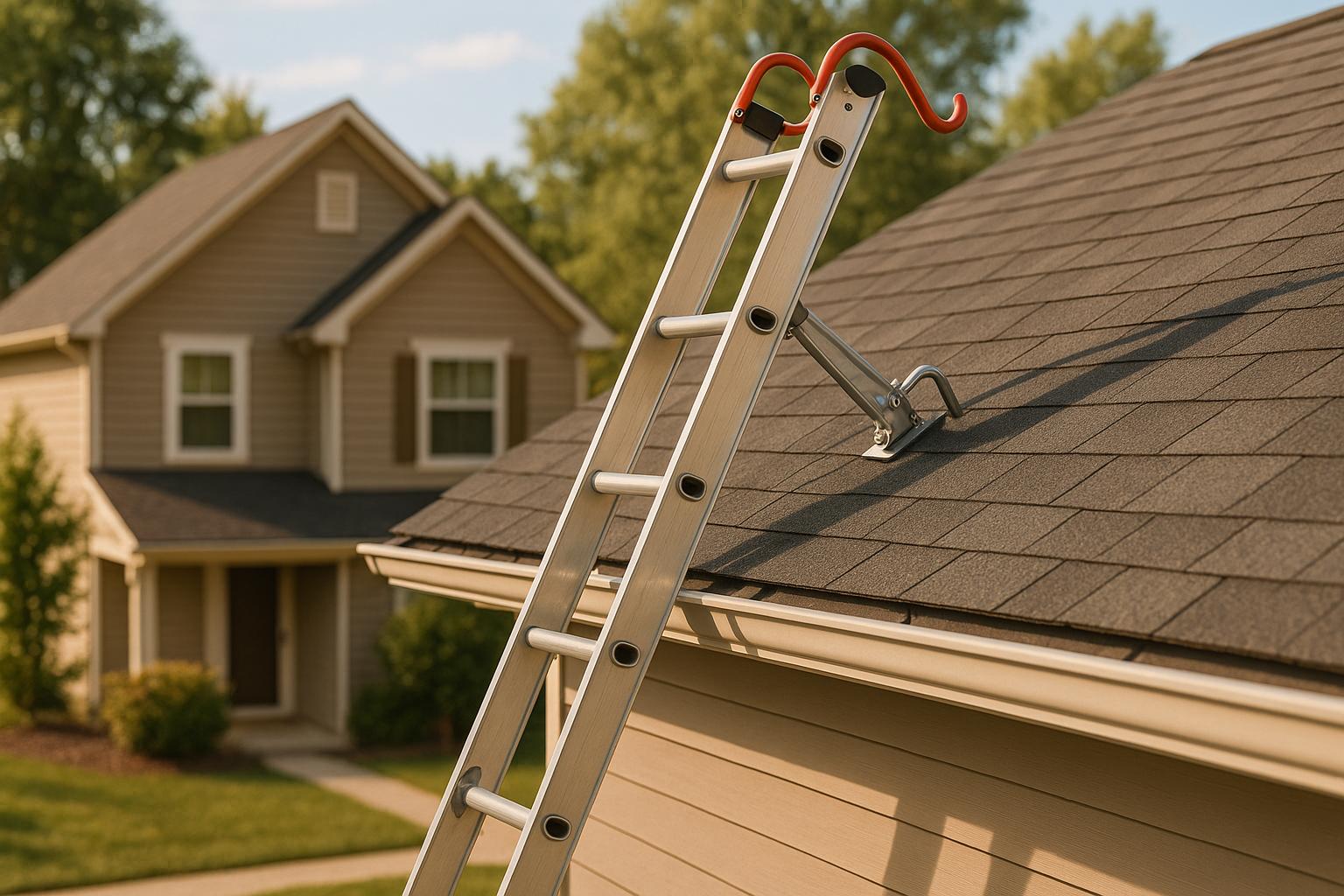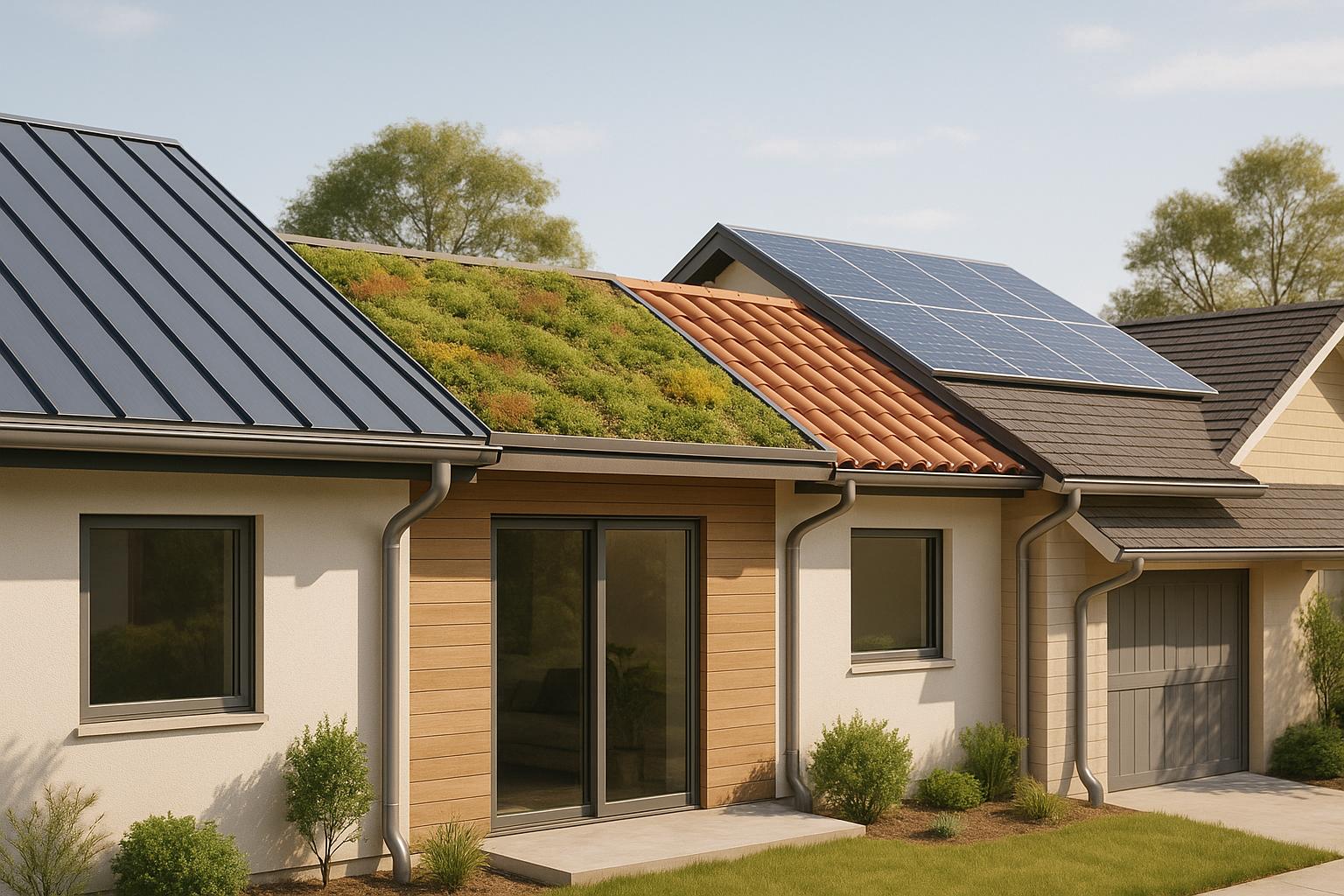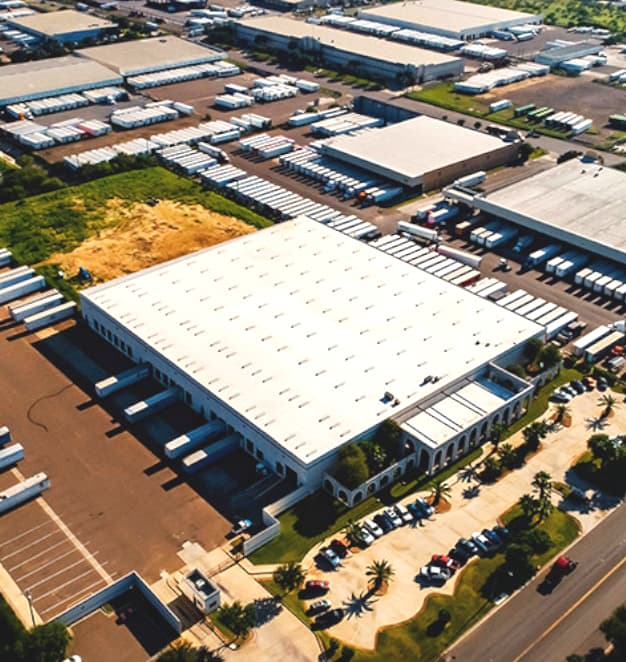- Fast Approval: Small residential systems (up to 10 kW/AC) can get permits in 3 business days under the Solar Efficiency Permitting Act (AB 2188).
- Affordable Fees: Permit fees are capped at $500 for systems up to 10 kW/AC.
- Submission Options: Apply online, in person, or by mail.
- Required Documents: Four sets of plans (2 for fire safety, 2 for building review), site plans, electrical diagrams, and structural details.
- Inspection: Only one inspection is required for qualifying systems.
- Zoning Rules: State laws like the Solar Rights Act protect homeowners’ rights to install solar panels without HOA interference.
Permit Center Hours:
- Monday, Tuesday, Thursday: 8:00 AM – 5:00 PM
- Wednesday: 8:00 AM – 12:00 PM
- Friday: Alternating (closed every other Friday)
- Weekend: Closed
For a smooth process, work with a licensed contractor familiar with Torrance’s regulations. Submit complete applications and schedule inspections promptly to avoid delays.
How to get your Solar Permit generate your plans for the City and your Utility
Torrance Solar Permit Basics
Let’s dive into the specifics of Torrance’s solar roofing permit requirements, building on the general process overview.
The City of Torrance has established guidelines that align with California law, ensuring the safe and efficient adoption of solar energy systems.
Current Rules and Standards
Torrance adheres to the Solar Efficiency Permitting Act (AB 2188), designed to simplify the permitting process for small residential solar systems. Here are some key points:
- Permits for eligible systems are issued within 3 business days, with fees capped at $500.
- Inspections are conducted in line with Chapter 14 of the Torrance Municipal Code.
To make the process easier, the Building Official provides an up-to-date checklist available on the City’s website. This checklist outlines everything from submitting documents to the review process and field inspections, ensuring homeowners know exactly what’s required.
Qualifying System Types
Not all solar systems qualify for expedited permitting. In Torrance, the following criteria must be met:
- System Size: Residential systems up to 10 kW/AC.
- Installation Type: Only roof-mounted systems are eligible.
- Inspection Requirements: Qualifying systems require just one inspection.
These criteria are designed to streamline the process for homeowners while maintaining safety and compliance.
Property and Zoning Rules
Torrance also enforces state laws to protect solar access and property rights:
- Solar Rights Act: Ensures homeowners’ right to install solar systems and limits restrictions from homeowners’ associations (HOAs).
- Solar Shade Act: Prevents new trees or vegetation from shading existing solar systems.
- HOA Limitations: The City cannot require HOA approval for small residential solar installations.
For in-person assistance, you can visit Torrance’s permit center at 3031 Torrance Boulevard during the following hours:
| Day | Hours |
|---|---|
| Monday, Tuesday, Thursday | 8:00 AM – 5:00 PM |
| Wednesday | 8:00 AM – 12:00 PM |
| Friday | Alternating (closed every other Friday) |
| Weekend | Closed |
These rules aim to strike a balance between encouraging solar adoption and upholding community standards, while safeguarding homeowners’ rights to utilize renewable energy.
Permit Application Steps
Before You Apply
Start by assessing your roof to ensure it can handle the weight and structure of a solar installation. Document your current electrical system and prepare a detailed site plan, including measurements and photographs. It’s also a good idea to consult a licensed solar contractor to confirm that your plans align with Torrance’s building codes. Once these steps are complete, gather the required paperwork outlined below.
Required Papers and Forms
When applying for a solar permit in Torrance, you’ll need to submit specific documents. Here’s a breakdown of the essentials:
Required Plan Sets
- Four complete sets of plans:
- Two sets for fire prevention review
- Two sets for building department review
Key Documents
- A site plan showing the panel layout
- Electrical diagrams
- Structural calculations
- Equipment specifications
- Details of the mounting system
- Fire safety access pathways
- A single-line electrical diagram
Make sure all your documents meet the city’s development checklist for solar photovoltaic systems.
How to Submit Your Application
Once everything is ready, you can submit your application through one of two methods. The fastest option is Torrance’s online streamlined permitting system. If you prefer, you can also apply in person.
In-Person Submission
Head to the Permit Center located at 3031 Torrance Boulevard. Be sure to check the operating hours mentioned in the earlier section.
Important Notes
- The city is currently experiencing longer-than-usual wait times.
- For questions about your permit, email Community Development at Community_Development_Dept@TorranceCA.Gov.
- Double-check all requirements before submitting to avoid unnecessary delays.
Permit Review Process and Timing
Navigating Torrance’s permit review process is essential for planning your project’s timeline. Once you submit your application, it will follow one of two review paths, each impacting how quickly your project moves forward.
Fast-Track Permits
For small residential rooftop solar systems, Torrance offers an expedited review process. To qualify, your system must meet the criteria outlined in the city’s requirements checklist.
Here’s what you can expect with fast-track processing:
- Turnaround time: Up to 3 business days for small rooftop solar PV systems.
- Inspections: Only one inspection is required.
- Review process: A simplified document review ensures faster approval.
This approach allows for quicker project starts while maintaining safety and compliance standards.
Regular Permit Process
Larger or more complex solar installations that don’t meet fast-track criteria go through a standard permit review. This involves a more detailed evaluation of your application. Once your installation is complete, the City schedules an inspection. After receiving City approval, the Net Energy Metering (NEM) process with Southern California Edison begins, typically wrapping up in under a month.
Several factors influence the review timeline:
- Completeness of your application
- Complexity of the solar system
- Current workload of the department
- How quickly you respond to correction requests
- Availability for inspection scheduling
To ensure a smooth process, submit a complete application with all necessary documents. Torrance’s online permitting system simplifies submissions and lets you track your application status throughout the review period. This thorough review ensures your project is ready for inspection, approval, and eventual grid connection.
sbb-itb-d1d6490
After Permit Approval
Installation Requirements
The installation process must align with the approved plans. Key considerations include:
- Ensuring safety shutdown systems and proper electrical components are in place.
- Mounting panels securely to protect the roof’s structure.
- Adhering to electrical codes and safety standards.
- Positioning equipment as specified in the approved layout.
All work must be carried out by licensed contractors who adhere to building codes and safety protocols.
Required Inspections
Once the installation is complete, the City will conduct a final inspection to confirm compliance. For small residential systems, a single inspection often covers both building safety and fire prevention measures. Here’s what to expect:
- Coordinate with the City to schedule your inspection.
- Inspectors will review the system to ensure it matches the approved plans and complies with all relevant codes.
- Electrical connections and safety mechanisms will also be evaluated.
Additionally, the Los Angeles County Fire Department (LACoFD) Fire Prevention Division must approve the system before it becomes operational. If any issues arise, they must be resolved, and follow-up inspections may be required.
Power Company Connection
After passing all inspections, Southern California Edison (SCE) will authorize the system for operation. The process involves several steps:
Grid Integration
- The system will supply power to your property.
- Any surplus energy will feed back into the SCE grid.
- Grid power will remain available when needed.
Solar Billing Plan (effective April 15, 2023):
- Operates under a Time-of-Use (TOU) rate structure.
- Provides credits for surplus energy sent to the grid.
- Uses a monthly energy exchange billing system.
Final Steps
- SCE will update your meter.
- They will issue authorization to operate the system.
- The Solar Billing Plan will be activated.
If you have questions about billing, you can reach SCE Customer Service at 866-701-7868 for residential inquiries.
Tips for Success
To make the solar roofing permit process as smooth as possible, keep these practical tips in mind.
Work with the Right Experts
Hire a solar contractor who holds CSLB and NABCEP certifications, carries full insurance, and has experience working in Torrance. This ensures you’re working with a professional familiar with local requirements and standards.
"A quality installation translates to decades of reliable, clean energy, while poor workmanship can lead to expensive repairs, safety issues, and reduced returns on your investment." – Solar Insure
Stay Organized with Documentation
Prepare a thorough application package that complies with current building codes. Whenever possible, submit your documents electronically for efficiency. Keep copies of everything – you’ll want them handy for reference during the entire process.
Plan Ahead
Coordinate your submission and inspection schedules with the Permit Center’s operating hours. After your solar system is installed, schedule inspections without delay. Consistent communication with your contractor will help keep things on track.
Follow Technical Requirements
Double-check that your equipment matches the approved plans, that all system components are clearly labeled, and that required safety features – like an accessible AC disconnect – are installed.
If you’re installing a small residential system (up to 10 kW/AC), you may qualify for a simplified review process that includes just one inspection. By sticking to these steps, you’ll not only streamline the permitting process but also ensure your project complies with Torrance’s guidelines.
FAQs
What advantages does the Solar Efficiency Permitting Act (AB 2188) provide for Torrance homeowners installing solar panels?
The Solar Efficiency Permitting Act (AB 2188)
The Solar Efficiency Permitting Act (AB 2188) brings a host of benefits for Torrance homeowners looking to install solar panels. One of its key features is simplifying the permitting process, ensuring that local governments approve permits and complete inspections for residential rooftop solar systems more quickly. This streamlined approach cuts down on delays, allowing installations to proceed without unnecessary hold-ups.
Another important aspect of the law is its protection against excessive costs. It prevents homeowner associations from imposing restrictions that would increase solar panel costs by more than $1,000. This keeps installation expenses reasonable, making solar energy a more affordable option for homeowners.
By speeding up approvals and keeping costs in check, AB 2188 not only encourages residents to embrace solar energy but also supports California’s broader push toward clean and renewable energy solutions.
What steps can I take to qualify for Torrance’s expedited solar permit process?
To get your solar permit approved faster in Torrance, you’ll need to meet a few important requirements:
- Submit a complete application: Include all necessary documents, like detailed plans for your solar installation.
- Stick to the city’s design standards: This includes following height restrictions and ensuring your roof can handle the system safely.
- Use city-provided resources: Standard plans and checklists can help ensure your submission meets all requirements.
- Pay your permit fees on time: Delays in payment can hold up the process.
If you check all these boxes, your application could be reviewed and approved in just 1–3 business days, letting you move ahead with your project without unnecessary holdups.
What should I do if my solar installation in Torrance needs additional inspections or corrections?
If your solar installation in Torrance needs further inspections or adjustments, here’s how to handle it:
- Go through the inspector’s feedback carefully to identify the specific changes or fixes required.
- Make the necessary corrections to your installation as detailed in the report.
- Arrange a re-inspection with the City of Torrance’s Building & Safety Division after completing all the required updates. Double-check everything to avoid additional setbacks.
- Provide any updated documents or plans if the city requests them.
- Once the re-inspection is complete, wait for the inspector’s approval before proceeding with the next steps of your solar project.
Acting quickly and ensuring your installation complies with local regulations will help keep your project moving forward without unnecessary delays.

